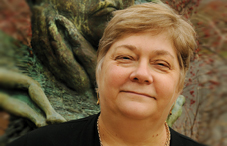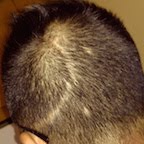May 2013, Vol 44, No. 5
American Psychological Association
Tori DeAngelis is a writer in Syracuse, N.Y.
A major cause of such problems is stroke, the fourth leading cause of death in the United States and a major cause of long-term disability.
 |
| Elissa Newport, cognitive psychologist |
In a groundbreaking effort to improve people's recovery after one of these devastating events, Georgetown University Medical Center has partnered with MedStar National Rehabilitation Hospital in Washington, D.C., to create the Center for Brain Plasticity and Recovery, which will apply new thinking and state-of-the-art research methods to improve recovery from stroke and, in the future, from other neurological disorders as well.
In July, Georgetown tapped cognitive psychologist Elissa Newport, PhD, of the University of Rochester's department of brain and cognitive sciences to head the new center, a post she assumed with Alexander Dromerick, MD, a Georgetown neurologist and stroke specialist, as its co-director.
"Elissa is an articulate spokesperson for the power of the interdisciplinary approach, and she lives and breathes science in a way that energizes [medical and psychology] students and fellows to pursue their work collaboratively and with great rigor," says Georgetown Medical Center's executive vice president, Howard Federoff, MD, PhD. "I'm confident that in future years, great young trainees will want to be part of the center because of her charisma and leadership."
At the center, scientists from a range of disciplines will study a variety of interventions that have the potential to enhance recovery after stroke, from cellular mechanisms that may facilitate healing to brain stimulation techniques that might optimize brain functioning.
The Monitor on Psychology (May 2013) spoke with Newport about the center's direction, the promise of plasticity research and the importance of interdisciplinary collaboration in addressing a public health problem that is bound to worsen as we face a "silver tsunami" of aging citizens.
How long has brain plasticity work been going on, and why is it vital to the new center's work
Scientists have been interested in brain plasticity since at least the 1930s. Early work suggested that there are critical periods for the development and reorganization of brain function, and showed that the brain's ability to change and learn declines with age. For example, when children experience damage to the left hemisphere, they reorganize language to the right hemisphere, but that no longer happens in adulthood. As a result, we used to think that extensive plasticity was not possible in the adult brain.
But in the last 10 or 15 years, researchers have begun to see evidence of residual plasticity in the adult brain, with a wave of research suggesting that the adult brain can still demonstrate plasticity in structure and function. So now, you see paper after paper in Nature and Science saying that taxi drivers in London have bigger hippocampi than those of other people, or that you can enlarge the areas of the brain dealing with sensory motor control by putting people in experiments where they learn to juggle.
These findings hint that there might be ways to harness such mechanisms after injury or disease — hints that we hope to exploit in our work at the center.
Why is interdisciplinary work so important when studying stroke recovery?
Stroke recovery is a complex process that involves the reduction of injury and the repair of damaged circuits, as well as the restoration or retraining of impaired physical, sensory and cognitive processes.
So it requires the input of many disciplines. One of these disciplines is represented by cellular-molecular people — scientists who study gene expression and cellular-molecular approaches to stimulating the formation of new synapses and circuits.
Then of course there are neurologists, who provide our clinical understanding of stroke and stroke recovery. This group includes pediatric and adult stroke neurologists, as well as neurologists who specialize in rehabilitation medicine and in clinical trials research.
A third group is cognitive neuroscientists, people like me who do basic research on learning, development and memory. We believe that rehabilitation involves many of the same mechanisms that underlie basic learning and memory, so if we understand how to control and enhance learning and memory, we'll also understand how to make rehabilitation work better at the times we need it.
What are some particularly promising directions the center will explore in studying stroke recovery and brain plasticity?
There are a few areas we're very interested in. One is something my colleague Alex Dromerick was already investigating at the National Rehabilitation Hospital that is related to my own interests in "critical periods" — windows of time where the brain shows more plasticity than others. In the case of stroke, the literature suggests there is a short period of time after the event where the brain tries to repair itself through processes such as sprouting new synaptic connections.
We don't know whether these processes are actually functional, but they happen pretty early on after a stroke, usually not at a time when people are well enough to undergo rehabilitation. So one promising direction is to test whether we can catch that very early period using appropriate rehabilitation methods, or, by manipulating the underlying molecular mechanisms, even push those processes to occur later, when patients are better able to work on rehabilitation training.
Several of our scientists, including Peter Turkeltaub, MD, PhD, and Michelle Harris-Love, PhD, are also using brain stimulation techniques to study whether stimulating or inhibiting specific parts of the brain can aid in recovery. In these techniques, you give participants magnetic resonance imaging that provides pictures of their brain and skull, then load the images into software that enables you to direct a stimulator on the skull to very precise areas of the brain.
Read the rest of this inspiring interview about combining stimulation techniques with behavioral training to enhance activity that is relevant to impaired cognitive functions.
Click here:
http://www.apa.org/monitor/2013/05/hope-brain.aspx


